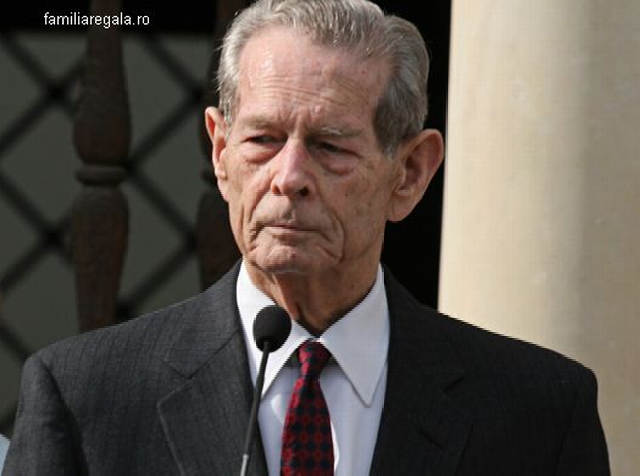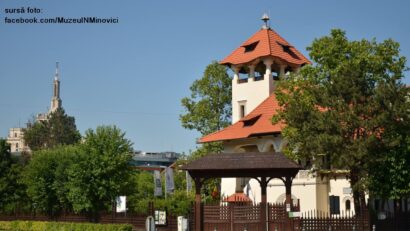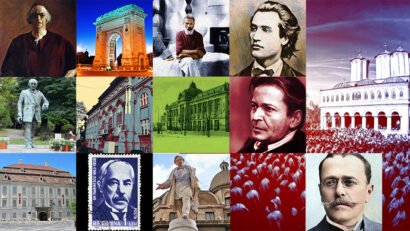King’s Day
"King's Day", or "Royalty Day", was the national day of Romania between 1866-1916 and 1918-1947

Ion Puican, 31.05.2025, 13:00
“King’s Day”, or “Royalty Day”, was the national day of Romania between 1866-1916 and 1918-1947. It was celebrated on May 10. In 1866, on May 10, Prince Carol I of Hohenzollern-Sigmaringen arrived in Bucharest and was crowned as ruler of Romania. On May 10, the coronation ceremony of King Carol I of Romania took place. At the same time, “King’s Day” also celebrated the declaration of independence by both chambers of the Romanian Parliament from the Ottoman Empire, a declaration that took place on May 9, 1877, thus marking the beginning of the Romanian War of Independence.
Historian Tudor Vișan Miu, passionate about the history of the Romanian royal family, tells us the following about the events associated with this May 10th and its significance:
“As for the significance of May 10th, the moment when Carol I began his reign, May 10th, 1866, certainly had its importance. But, 11 years later, in 1877, May 10th somehow fulfills its purpose that had been established in 1866. In what sense? Because bringing Carol I to the throne of Romania was linked, associated with this desire of the Romanians to obtain national independence from the Ottoman Empire and to assert itself on the stage of European states, which was completed, moreover, in 1881, with the proclamation of the Kingdom of Romania, based on important documents. Now, of the historical meanings of May 10th, the one associated with the royal family has been preserved first and foremost, what we consider to be Romanian royalty. It is because the Royal Family currently has activities and the May 10th program. The celebration of May 10th is mainly associated with the activities organized by the Royal Family, the most famous of which remains, of course, the garden party at the Elisabeta Palace, which is indeed part of a wider series of current moments.”
About the role of the Royal House today, in Romania’s foreign policy and diplomatic relations today, historian Tudor Vișan Miu gives us more details:
“As for the role of the Royal House in today’s Romanian society, it is linked to the activities that the Royal Family carries out in certain fields. Some are related to royal diplomacy, certainly having valences for certain foreign policy directions, through which one enters precisely because of the doors that the royal family opens, having at their disposal certain relationships, certain forms of manifestation that the institutions of the Romanian state do not allow. This is certainly a component of national importance. For society, the Royal Family remains a landmark, not necessarily through what it does, but through what it represents. And this is indeed a matter that is preserved, maintained through a kind of constancy, coherence, continuity, and the avoidance of any slippage.”
The history of “King’s Day” has been a turbulent one, mirroring the history of Romania. In 1917 it was banned as a result of the German occupation of Romania, being resumed between 1918-1947. In 1947, “King’s Day” was permanently banned by the communist regime installed in power after the forced abdication of King Michael I of Romania. Has this holiday been erased from the collective memory? Tudor Vișan Miu tells us more:
“The communist regime tried to erase May 10 from memory and, in a way, these systematic efforts left traces in the sense that, as a historical fact, what happened on May 9, 1877 was not wrong, but it was obvious to anyone at the time, and it had been for a very long time, that May 9 was in fact the antechamber to that day. However, the fact that May 10 has already been established in Romanian legislation as Independence Day, there is a law in this regard, corresponds to several signs, indications. The first gesture of independence was the establishment of the Order of the Star of Romania, the day of the order is May 10, and I am sure there are others that can be invoked. The most annoying sign, however, is perhaps the confusion related to several historical moments that are found at this convergence of dates May 8-May 9, the end of World War II. May 9 is Europe Day, and May 9-May 10 related to Independence Day. It is indeed a confusion that does not always bode well.”
In recent history, on May 14, 2015, it was decided by law that “May 10 will be celebrated every year as a national holiday” by organizing cultural and artistic events, without explicitly mentioning the name of the holiday in the normative act. In the media and in popular culture it is called “Royalty Day”. In 2021, Law no. 189/2021 comes into force which states: “May 10 will be celebrated every year as Romania’s National Independence Day, a national holiday, a working day.”.






























